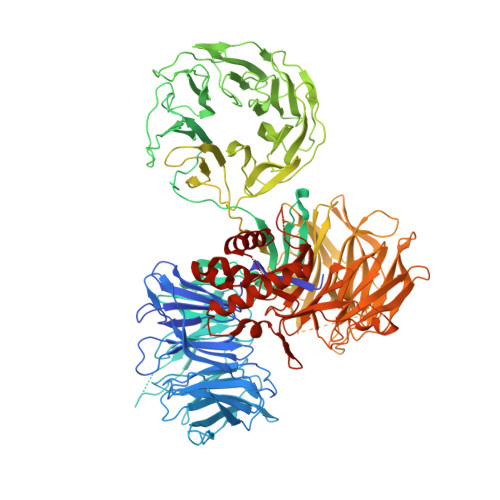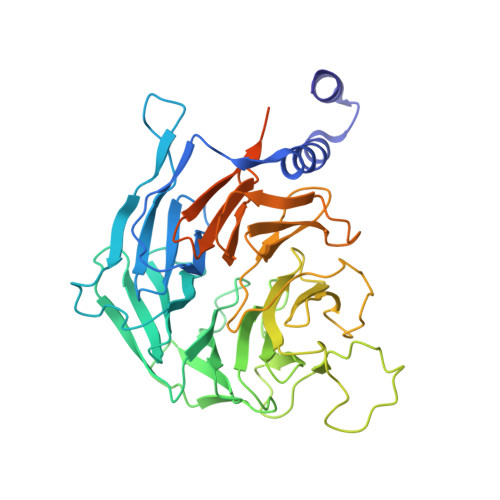TRiC controls transcription resumption after UV damage by regulating Cockayne syndrome protein A.
Pines, A., Dijk, M., Makowski, M., Meulenbroek, E.M., Vrouwe, M.G., van der Weegen, Y., Baltissen, M., French, P.J., van Royen, M.E., Luijsterburg, M.S., Mullenders, L.H., Vermeulen, M., Vermeulen, W., Pannu, N.S., van Attikum, H.(2018) Nat Commun 9: 1040-1040
- PubMed: 29531219
- DOI: https://doi.org/10.1038/s41467-018-03484-6
- Primary Citation of Related Structures:
6FCV - PubMed Abstract:
Transcription-blocking DNA lesions are removed by transcription-coupled nucleotide excision repair (TC-NER) to preserve cell viability. TC-NER is triggered by the stalling of RNA polymerase II at DNA lesions, leading to the recruitment of TC-NER-specific factors such as the CSA-DDB1-CUL4A-RBX1 cullin-RING ubiquitin ligase complex (CRL CSA ). Despite its vital role in TC-NER, little is known about the regulation of the CRL CSA complex during TC-NER. Using conventional and cross-linking immunoprecipitations coupled to mass spectrometry, we uncover a stable interaction between CSA and the TRiC chaperonin. TRiC's binding to CSA ensures its stability and DDB1-dependent assembly into the CRL CSA complex. Consequently, loss of TRiC leads to mislocalization and depletion of CSA, as well as impaired transcription recovery following UV damage, suggesting defects in TC-NER. Furthermore, Cockayne syndrome (CS)-causing mutations in CSA lead to increased TRiC binding and a failure to compose the CRL CSA complex. Thus, we uncover CSA as a TRiC substrate and reveal that TRiC regulates CSA-dependent TC-NER and the development of CS.
Organizational Affiliation:
Department of Human Genetics, Leiden University Medical Center, Einthovenweg 20, Leiden, 2333 ZC, The Netherlands.















